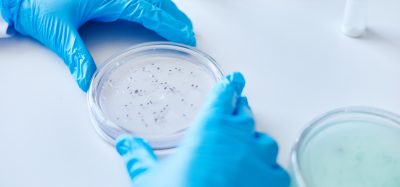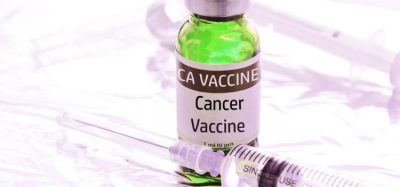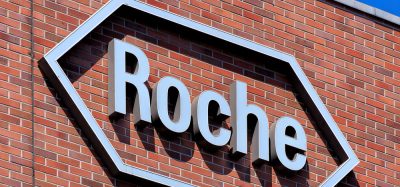Positive results from initial lopinavir-ritonavir COVID-19 clinical trial
Posted: 7 April 2020 | Hannah Balfour (European Pharmaceutical Review) | 2 comments
Researchers found that the combination of lopinavir-ritonavir HIV antivirals led to rapid symptom improvement in COVID-19 patients.


Results from a clinical trial comparing a lopinavir-ritonavir combination to the standard of care for COVID-19 suggest the therapy is promising. The findings will be considered as part of the upcoming Randomised Evaluation of COVid-19 thERapY (RECOVERY) trial.
The lopinavir-ritonavir trial started when there were only 500 COVID-19 cases worldwide. Researchers at the Jin Yin-Tan Hospital treated 199 COVID-19 patients with either the HIV antiviral combination of lopinavir-ritonavir or the standard of care. According to the team, the symptoms of patients treated with lopinavir-ritonavir improved faster than those given the standard of care alone. The researchers also cited acceptable safety levels throughout.
Professor Thomas Jaki, from the Medical and Pharmaceutical Statistics Research Unit in the Department of Mathematics and Statistics at Lancaster University, who worked on the first trial, said: “The results were quite encouraging, which has led to further studies taking place and I would expect to see these treatments to be introduced into routine care, in some cases, in the coming weeks.”
According to Professor Jaki, the findings of the study are going to be considered as part of the forthcoming Randomised Evaluation of COVid-19 thERapY (RECOVERY) trial. RECOVERY is designed to be a trial platform to evaluate some of the approximately 30 treatments believed to have potential as therapies for COVID-19. The chief investigator for this trial is Peter Horby, Professor of Emerging Infectious Diseases and Global Health in the Nuffield Department of Medicine at the University of Oxford – who was also part of the initial study in Wuhan.
Professor Jaki said he was astonished by how quickly the RECOVERY trial has been set up, taking just nine days from the initial agreement from the UK Department of Health and Social Care (DHSC) to the first patient being recruited. He said that process “would usually take between six and nine months.”
Jaki said that the RECOVERY trial has been kept simple, with a short protocol aimed at minimising the burden on staff in hospitals which are overwhelmed. He suggested that the protocol should allow the trial to be done quickly.
The RECOVERY trial has been classed as an Urgent Public Health Research Study. It is one of a round of projects to receive £10.5 million as part of the £20 million rapid research response funded by UK Research and Innovation (UKRI) and DHSC through the National Institute for Health Research (NIHR).
Related topics
Clinical Trials, Drug Development, Drug Safety, Funding, Research & Development (R&D), Therapeutics, Viruses
Related organisations
Jin Yin-Tan Hospital, Lancaster University, UK Department of Health and Social Care (DH), UK National Institute for Health Research (NIHR), UK Research and Innovation (UKRI)










I suppose my question would be, how do you determine that the research indicated benefit when the research itself states that there was no benefit?
Abstract
BACKGROUND
No therapeutics have yet been proven effective for the treatment of severe illness caused by SARS-CoV-2.
METHODS
We conducted a randomized, controlled, open-label trial involving hospitalized adult patients with confirmed SARS-CoV-2 infection, which causes the respiratory illness Covid-19, and an oxygen saturation (Sao2) of 94% or less while they were breathing ambient air or a ratio of the partial pressure of oxygen (Pao2) to the fraction of inspired oxygen (Fio2) of less than 300 mm Hg. Patients were randomly assigned in a 1:1 ratio to receive either lopinavir–ritonavir (400 mg and 100 mg, respectively) twice a day for 14 days, in addition to standard care, or standard care alone. The primary end point was the time to clinical improvement, defined as the time from randomization to either an improvement of two points on a seven-category ordinal scale or discharge from the hospital, whichever came first.
RESULTS
A total of 199 patients with laboratory-confirmed SARS-CoV-2 infection underwent randomization; 99 were assigned to the lopinavir–ritonavir group, and 100 to the standard-care group. Treatment with lopinavir–ritonavir was not associated with a difference from standard care in the time to clinical improvement (hazard ratio for clinical improvement, 1.24; 95% confidence interval [CI], 0.90 to 1.72). Mortality at 28 days was similar in the lopinavir–ritonavir group and the standard-care group (19.2% vs. 25.0%; difference, −5.8 percentage points; 95% CI, −17.3 to 5.7). The percentages of patients with detectable viral RNA at various time points were similar. In a modified intention-to-treat analysis, lopinavir–ritonavir led to a median time to clinical improvement that was shorter by 1 day than that observed with standard care (hazard ratio, 1.39; 95% CI, 1.00 to 1.91). Gastrointestinal adverse events were more common in the lopinavir–ritonavir group, but serious adverse events were more common in the standard-care group. Lopinavir–ritonavir treatment was stopped early in 13 patients (13.8%) because of adverse events.
CONCLUSIONS
In hospitalized adult patients with severe Covid-19, no benefit was observed with lopinavir–ritonavir treatment beyond standard care. Future trials in patients with severe illness may help to confirm or exclude the possibility of a treatment benefit.